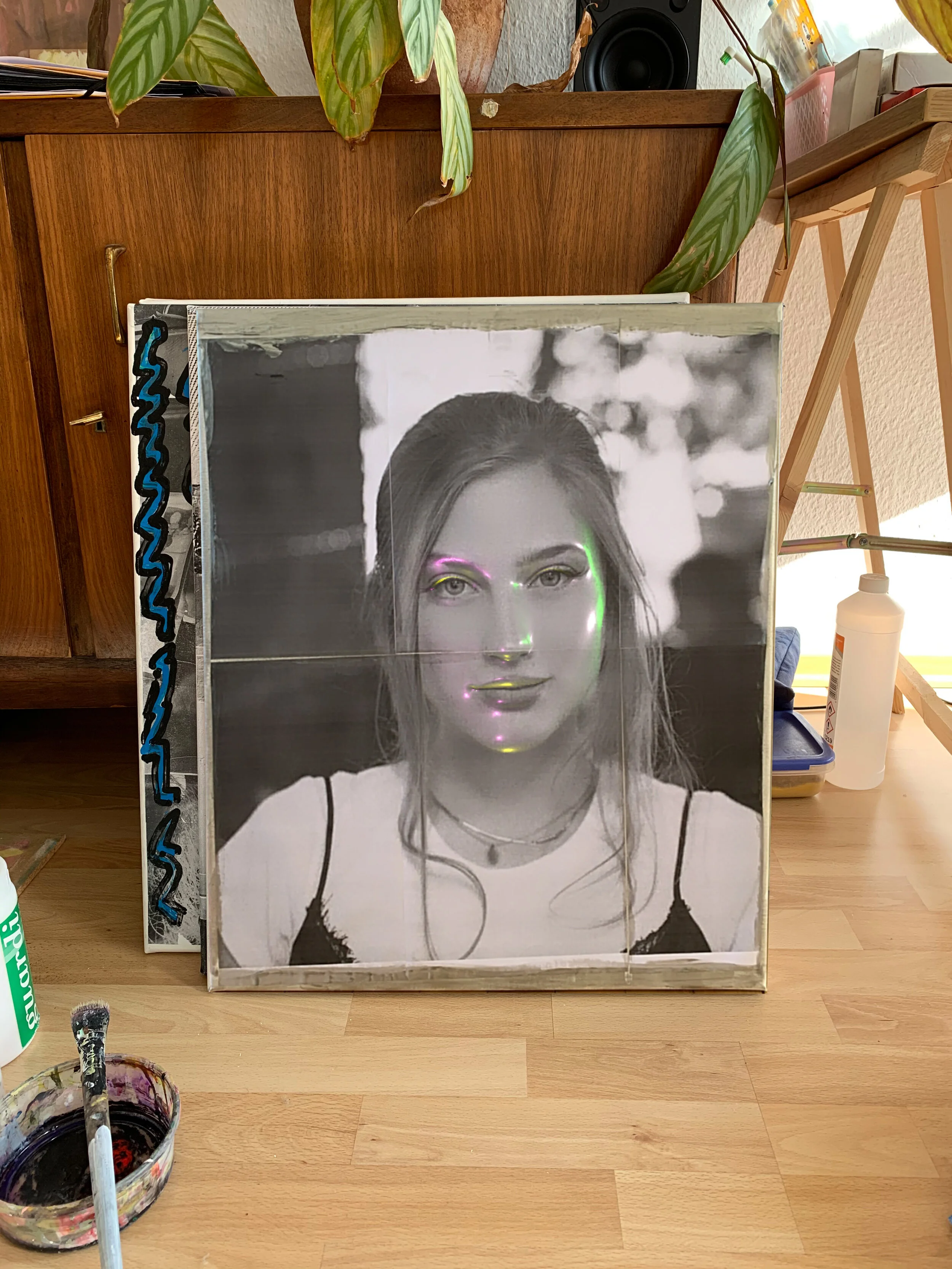A Corner of Home Tilo&Toni
A CORNER OF HOME
Tilo&Toni
Published 25 April, 2020
In the days that have passed and the days that are to come, we'll all be spending more time indoors. A Corner of Home collects photographic studies and new works made by artists in their immediate environments; small snapshots of the impulse to create.
Edited by Trine Stephensen and Joanna Cresswell
1. Where are you living at the moment and how has that environment shaped you creatively? Can you tell us about a favourite detail of this place and why?
The work adapts to the external circumstances. Sometimes you have a lot of space, sometimes just a little. And the work reflects that. In the end, it is important to us that the work flows easily in an appropriate space. A workplace has to be practical. It is nice to see how, in a way, workplace structures and workflows emerge automatically. It has always been important to us to feed the advantages and disadvantages of places into our practice. That means: there are no bad places for Tilo & Toni :) ! Our studio is in Cologne and at the moment we mainly work from home and exchange a lot of material. Therefore, the simple A4 laser printer is right now a central tool for our practice. We can still pull images of places of longing from the world wide web to deal with them (Or said more simply: We never had to fly to Italy to bring Italian vibes into our work :) ).
2. How have you looked at the materials of home differently in the past weeks? Are there parts of it that have revealed themselves to you in new ways?
Actually, the situation is not so unusual for us because we live in different places and mostly work via a shared Dropbox anyway. Despite the seriousness of the situation, the question of what the crisis, at its current stage, is bringing about to the artistic practice feels like quite a romantic one. That something valuable happens artistically after a few weeks of no contact or curfew seems rather unlikely to us. In the question, the longing for the special event or state is more discernible. For us, the question of how to deal with image material in times of social media is still central. In his essay After Art, David Joselit poses the question regarding if pictures – in times, in which they have become somewhat consensus – can still be considered relevant objects of artistic work. This is a highly intelligent question many artists who work with images implicitly ask themselves. What kind of image can I actually add to the long history of art?
We don't actually take photos at all anymore, at least not in a classical way. Neither planned as part of a project, nor snapshots in everyday life. In most cases it is simply superfluous. Remixing and sampling images is actually sufficient. Taking photos is often a somewhat nostalgic act.
3. Tell us about how you’ve been using photography lately? What are you making or putting in front of the lens?
What we are currently looking for is the longing for authenticity in virulent narratives and visual worlds. In an interview, Daniel Richter addresses the romantic cliché that is reflected in certain media products. It has become clear to us recently that you can work deeply superficially and still know exactly what you are doing, which is as well a very analytical procedure. The reason for this interest in the surface is that certain pictorial rhetorics, narratives, codes, memes, discourse particles, fashions, tricks are in themselves small, virulent, quick and easy to consume, short, flat units that have little depth, i.e. are superficial.








